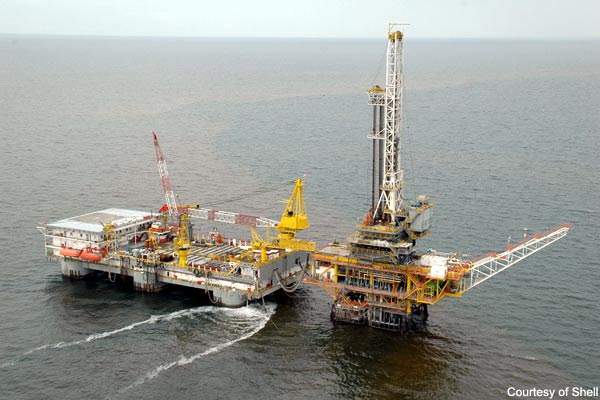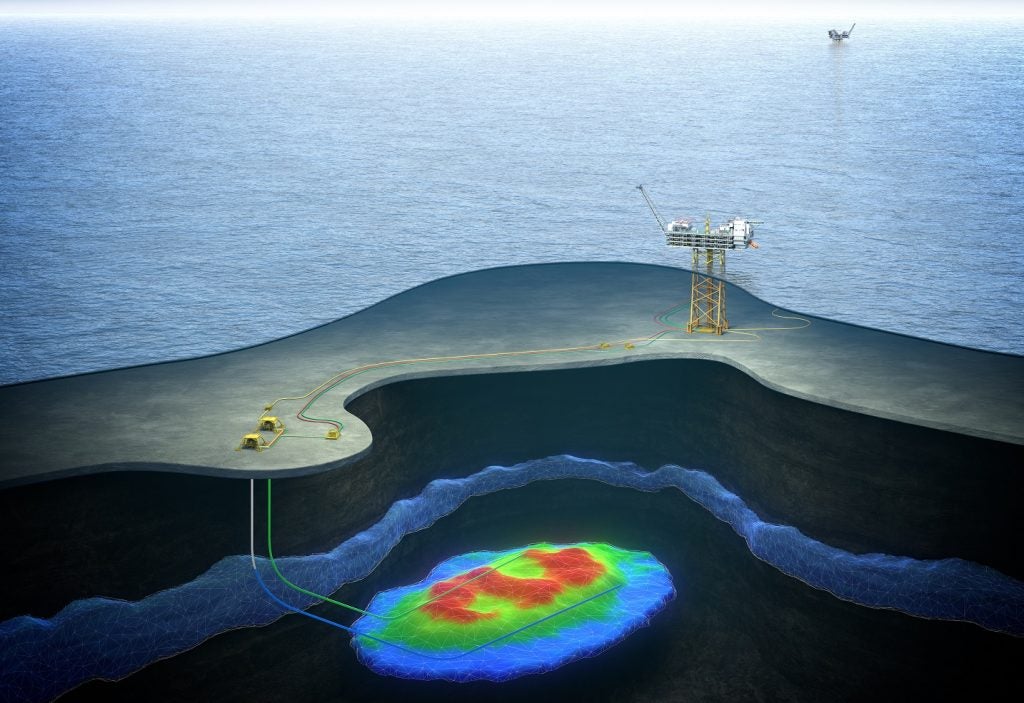
Although a number of major industry players have interests in a range of shallow, deep and ultra-deepwater projects, the whole Asian energy landscape remains a developing picture – and a rapidly changing one at that – complicated by economic and political pressures, national interests and a growing regional awareness of the strategic importance of offshore resources.
In addition, according to the World Energy Council, the pro-active initiatives adopted by the governments of some Asian countries have driven fundamental step-changes in their national primary energy supply for power generation, largely to reduce dependency on imported Oil.
The interplay of such issues is never likely to be straightforward – a point exemplified by recent developments in Indonesia. Amid moves to revise the country’s cost recovery programme to tighten the rules under which all the sector’s operators work and provide a more financially sound deal for the nation itself, wrangles over revenue splitting in February, saw Exxon Mobil lose out to the state-owned Pertamina.
However, lacking the necessary capital and technological base to develop the field in question – the Natuna D-Alpha gas block – Pertamina will need to find a strategic partner, possibly having to relinquish as much as half the equity in the deal. Owning resources is one thing, being able to develop them is quite another and as a result, alliance and expediency are no strangers to the Asian offshore environment.
CHINA’S HIGH-ENERGY ECONOMY
See Also:
With a national demand which has been predicted to reach 14 million barrels a day by 2030 – more than five and a half times the amount in 1989 – China’s energy needs are significant.
How well do you really know your competitors?
Access the most comprehensive Company Profiles on the market, powered by GlobalData. Save hours of research. Gain competitive edge.

Thank you!
Your download email will arrive shortly
Not ready to buy yet? Download a free sample
We are confident about the unique quality of our Company Profiles. However, we want you to make the most beneficial decision for your business, so we offer a free sample that you can download by submitting the below form
By GlobalDataAs Arthur Ding, former director of the China politics division at the National Chengchi University, Taiwan observed “having recognised that energy supplies form the grease for its economic engine, China cannot afford to have its energy supply disrupted.”
A stalled economy would bring the threat of potential social unrest in its wake and against such fears, guaranteeing the continuity of energy has understandably come to enjoy particularly high priority in the government’s strategic thinking.
China’s state-owned National Offshore Oil Corp (CNOOC) – the country’s biggest offshore producer – has set a production target approaching 200 million barrels of oil equivalent for 2008, up 16% on the 170 million barrels it planned to produce in 2007. The total capital spending is planned to rise to $5.24bn – a hike of nearly 45%, with around four-fifths of this being earmarked for developing oil and gas fields both at home and overseas.
Expecting to bring no fewer than ten new projects online and boosting its key reserve to replacement ratio measure above 100%, CNOOC is clearly looking to use the high oil price environment to speed up operations. They are also looking to increase operational efficiency.
The company has expanded heavily into overseas oil and gas fields over recent years and expects production from these assets to increase to between 24 and 26 million barrels of oil equivalent, from around 22 million in 2007. Small wonder that Fu Chengyu – CNOOC’s chairman – describes 2008 as ‘a new and exciting year of rapid growth’.
OFFSHORE INDIA
India’s energy policy is also designed to sustain its ongoing development and meet future needs, which has led to increased offshore activity and a rapidly expanding upstream oil and gas market.
In March, the state-owned Oil and Natural Gas Corporation (ONGC) announced that it was in talks with 12 international companies regarding developing deep and ultra-deep fields in the Krishna-Godavari and Mahanadi basins – although declining to name names.
Memoranda of understandings (MoUs) are already in place with a number of major players for a variety of other projects, including Brazil’s Petrobras for offshore E&P activities, Eni of Italy to share deepwater drilling rigs and Statoil Hydro for clean carbon technology. In addition, ONGC and Shell have already signed a new exploration licensing policy deal.
Whatever the eventual outcome of these latest discussions, the Krishna-Godavari deep-water areas alone will be producing additional natural gas to the tune of 40 million metric standard cubic meters a day by July 2008 as a result of the efforts of Reliance Industries and NIKO Resources.
There is little doubt that India is ramping up the stakes. Over the last three years, the state-owned companies – ONGC, Oil India, Indian Oil Corp, Gas Authority of India, Bharat Petroleum Corp and Hindustan Petroleum – have bought interests in 35 oil and gas projects, located in 20 countries.
Like China, India needs to ensure continuity of supply. As the country’s junior minister for petroleum and natural gas, Dinsha Patel, comments, “besides commercial benefits to the oil companies, equity oil abroad also provides national energy security.”
INVESTMENT HOT SPOTS
With regional oil production – and south-east Asia’s contribution in particular – widely expected to assume enormous strategic importance over the coming years, inevitably anywhere with reserves qualifies as a potential investment hot spot.
A significant amount of the investment taking place in Asian offshore activities currently comes from what are effectively regional cooperations. Thailand’s PTT Exploration and Production (PTTEP), for example, recently reached agreement with China’s CNOOC to make joint investments in Burma, in line with a deal signed some years ago to pursue joint energy development projects.
Currently PTTEP runs the M3 and M4 offshore fields in the Gulf of Martaban and CNOOC has licences for the A4 and C1 fields. PTTEP will shortly sign a preliminary agreement with the Burmese government for the M9 block – all the output gas going to parent firm, PTT; the field is scheduled to start production by 2012, at a rate of over eight million cubic metres a day.
PTTEP has a five-year investment plan covering 2008-12 and although domestic projects will account for nearly 90% of the spend, developments are also planned in Burma, Cambodia, Indonesia and Vietnam. Significant major new output is shortly due to come from the Arthit and Arthit North gas fields in the Gulf of Thailand, while the Malaysia-Thailand Joint Development Area (MTJDA) project is set to begin producing around 270mmcfd in the second half of 2008.
Malaysia too remains high on the hot-spot list for a number of reasons. There are major projects such as the B-193 cluster field – located in the Heera-Panna-Bassein block, some 75km west of Mumbai in 60m to 75m of water – and Shell’s agreement to develop the Gumusut-Kakap deepwater oil and gas fields.
In addition, ship demand continues to be buoyant here, drilling rigs and platforms driving a persistent call for offshore support vessels. With an aging fleet worldwide, new exploration is good news for ship builders, as operators seek to upgrade their vessels to meet current oil company standards.
TECHNOLOGY DRIVES
Subsea systems are one area of technology which seems set to see major uptake within the region, not least since they offer reliable, cost-effective ways to accelerate production and boost reserves particularly in deepwater offshore fields.
In the words of Steve Brown, managing director for DOF Subsea Asia, the market in the region is ‘very strong’. Enhanced recovery and increased commercial viability become key objectives against the backdrop of rising oil prices and, as a result, will remain significant drivers on this technology into the foreseeable future.
With subsea spend forecast to achieve a 65% increase compared with the five years leading up to 2007, Asia stands poised to benefit from a predicted $16.8bn cap-ex outlay – compared with $3.7bn during the earlier period.
For other areas, the drive may be less clear – and more expedient. As India’s ONGC chairman and managing director, RS Sharma, explains, the choice of JV partners will depend on individual project requirements, company expertise and the available technology they offer.
His company’s deal with the Norwegian StatoilHydro is a case in point – the MoU having been signed in February to gain practical experience to help carbon credit projects to be fast-tracked and gain access to climate change technologies. The deal covers CO2 capture and sequestration (CCS), clean development mechanism (CDM) and various other climate change projects relevant to ease the transition to the much-heralded carbon economy.
Beyond long-term and strategic considerations, the current technology demand remains largely mainstream, with the likes of topside module design, ultra-deepwater drill-ships, dry underwater welding, seismic and submersible technologies being especially well represented.
The geological and geo-physical nature of the region inevitably makes it an area of significant potential promise for further exploration – a facet further cemented by its unique geo-political and economic strategic position.
The rapidly expanding economies throughout China, India, Malaysia and the whole of Southeast Asia are creating an unprecedented regional demand for oil and gas, with ever-expanding offshore exploration and development arising as the natural corollary.
Further growth in offshore activity throughout Asia – and the continued establishment of an increasingly mature market for both commodities – seems assured for the foreseeable future.





